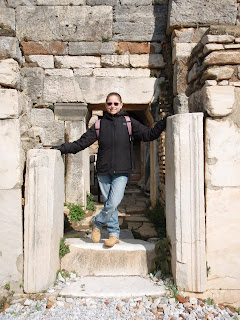Friday, May 20, 2011 -  Alain Lacoursière,Canada,Leonardo da Vinci,Madonna and the Yarnwinder,Montreal Museum of Fine Arts
Alain Lacoursière,Canada,Leonardo da Vinci,Madonna and the Yarnwinder,Montreal Museum of Fine Arts
 No comments
No comments
 Alain Lacoursière,Canada,Leonardo da Vinci,Madonna and the Yarnwinder,Montreal Museum of Fine Arts
Alain Lacoursière,Canada,Leonardo da Vinci,Madonna and the Yarnwinder,Montreal Museum of Fine Arts
 No comments
No comments
Part Two: Alain Lacoursière, the Mercedes-Benz Commercial Video, and Madonna and the Yarnwinder
Recently Alain Lacoursière’s favorite suspect for the unsolved 1972 theft of the Montreal Museum of Fine Arts sent the retired police officer a link to a Mercedes-Benz commercial video that fictionalizes the theft of a brief case from a bank vault. At the end of a high speed chase involving a very sleek German sedan, the brief case is delivered to a third party who later open to show that the contents of the brief case is a painting. The newscaster in the video reports under the headline: “Stolen Da Vinci Re-Emerges”:
The Paris National Art Collection was handed over a long-lost masterpiece by Leonardo Da Vinci today. The Da Vinci piece was being hidden for years by backers of the mafia in a safe deposit box. The FBI estimates the value of the Madonna of the Yarnwinder at approximately 70 million euros.“The Madonna of the Yarnwinder is the subject of several oil paintings after a lost original by Leonardo da Vinci “(Wikipedia.org).
 |
| The Lansdowne Madonna |
Another version of this painting, The Madonna of the Yarnwinder (Duke of Buccleuch), and considered to have been painted under Leonardo, was stolen from the Duke of Buccleuch’s home in Scotland in 2003. Two men posing as tourists during a public tour of Drumlanrig Castle overpowered a female staff member and carried the painting out the window. The painting was valued at 30 million pounds.
 |
| Madonna with Yarnwinder (Duke of Buccleuch) |
The original is lost, but how do the experts describe these two ‘copies’? I found an interesting source here. Martin Kemp wrote about the paintings in 1992 (Leonardo da Vinci and the Mystery of the Madonna of the Yarnwinder (exhibition catalogue, Edinburgh: National Galleries of Scotland):
How much of the Buccleuch copy was painted by Leonardo was a matter of scholarly debate until recently. Scientific studies indicate that in addition to the work's underdrawing (with its pentimenti or small changes), the genius was most likely responsible for its overall design, the figures and the skillfully rendered rocky foreground. The landscape is uncharacteristic of Leonardo; it was probably painted a bit later by another artist, perhaps a workshop assistant. The flesh tones of Mary's face were executed using Leonardo's typical sfumato or smoky technique. A second brighter copy of The Madonna of the Yarnwinder belongs to a private collector.












